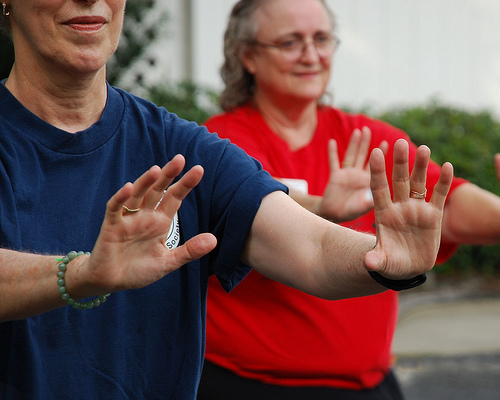What You Could Do On A Gigabit Network: Tai Chi Class Through Your Television
LAFAYETTE, La., — April 23, 2010 — When Google announced its Gigabit fiber network initiative this February [http://googleblog.blogspot.com/2010/02/think-big-with-gig-our-experimental.html], the first example it offered of what such a network could be good for was a rural telehealth application wher
LAFAYETTE, La., April 23, 2010 – When Google announced its Gigabit fiber network initiative this February, the first example it offered of what such a network could be good for was a rural telehealth application where someone could meet with their doctor over the web.
While the description sounds futuristic, many groups are already experimenting with the potential of this idea. At the FiberFête conference here, technologist Larry Keyes shared one project that he’s piloting together with the University of Vermont. The application they tried out? Tai Chi through your television.
“We know that Tai Chi will help keep senior patients healthy, and that exercise will improve their balance and circulation and promote a sense of well-being, we have a stack of studies that have proven this,” he explained. “The problem is that we can’t get to the patients, and the patients can’t get to us.”
“So clearly, the solution is, if we can’t bring the patient to the health care, we’re going to bring the health care to the patient.”
With a grant from the National Institute on Aging of the National Institutes of Health, Keyes and a professor from the University of Vermont conducted two 15-week pilot studies that hooked the seniors up thrice a week for an hour each session to a virtual classroom. Seniors who had experienced bad falls, and those who were afraid of falling because of a precarious sense of balance took the class. They took the class in the comfort of their own living rooms, and the set-top box enabled them to see both each other and their instructor on their television.
The classes were enabled by a video-conferencing set-top box designed by Keyes’ firm Microdesign Consulting. The box is the size of a paperback book and connects the patient up via a cable or DSL connection (although Keyes said that a fiber connection would definitely work best.)
The goal of the initial pilot projects was to find the answers to many questions. Would the idea be feasible at all? And how effective would it be compared to regular in-person group Tai Chi classes, or classes seniors could take just by following a DVD?
The classes were broadcast from a couple of spots in Burlington, Vt., and the seniors, who ranged in age from 78 to 93, participated in the class from various locations within a 60 mile radius of Burlington.
Keyes said that the firm discovered during the pilots that the videoconferencing system held another potential: Helping home-bound seniors easily connect with others and finding companionship. While the cost of the box itself is twice as expensive as the most basic PC, dialing each other up is “free” because the system uses broadband connections. A couple of the seniors ended up calling each other to complete crossword puzzles together over the week-end, Keyes said.
Keyes and the University of Vermont professor are trying to convince the state’s Department of Health to implement the idea in the state. One of the hurdles is the cost of the program versus the cost of renting a studio. Keyes suggested that a potential solution is getting several different kinds of programs running in the household.
“We’re refining the design so that it would be a number of different applications, perhaps from a number of different providers,” he said. “The device could perhaps be used for a diabetes management program, or some type of nutritional program other than just the one program.”
This is a kind of application could be deployed in Lafayette, with its new availability of 100 megabit per second fiber network — although the potential number of stakeholders involved in such a program, and the cost of deployment could be significant hurdles to implementation.
“This is a good example of a population where seniors might pass it up,” Keyes said. “They might just use the internet for e-mail and surf the web for a little bit, so I think this represents an example of something that would benefit from a very high-speed connection.”
Editor’s Note: Travel and accomodations for this series of stories was provided by the organizers of FiberFête.









Member discussion